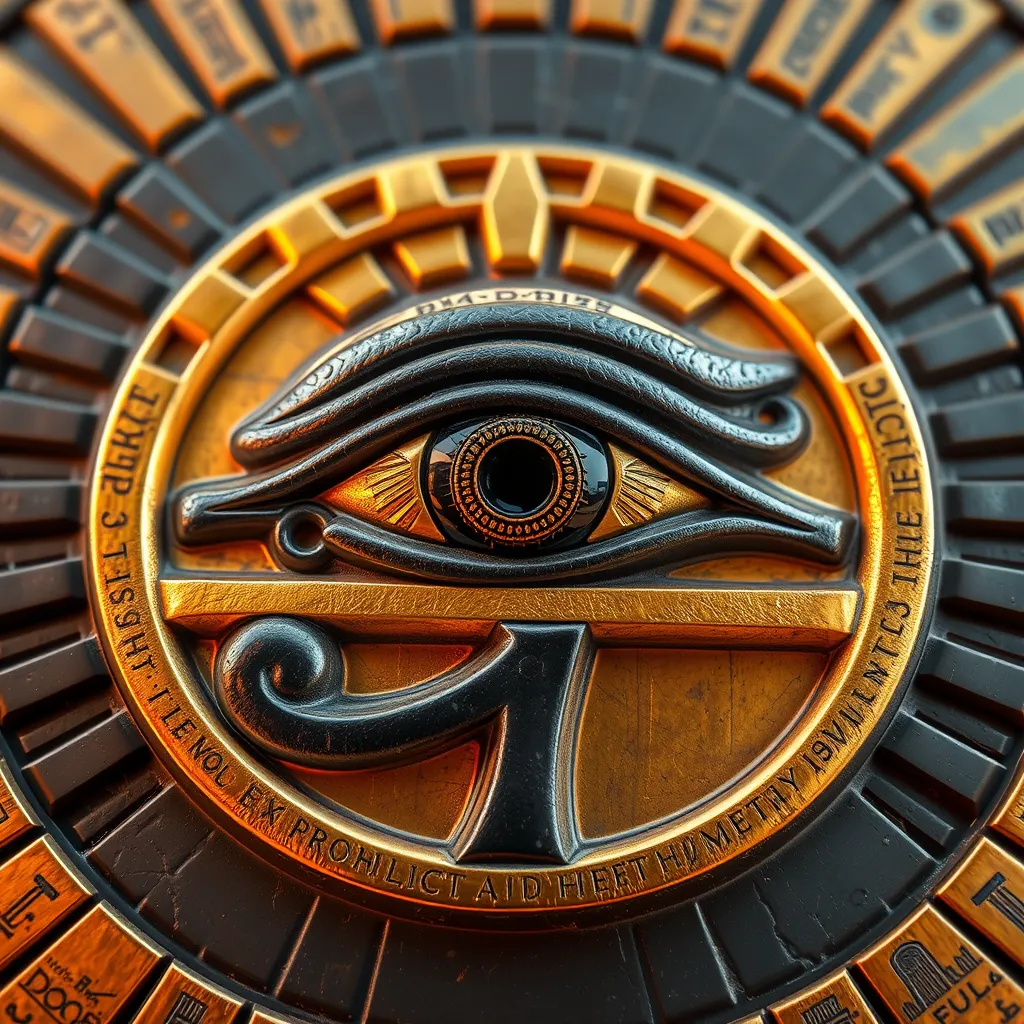The Eye of Horus: A Symbol of Power, Protection, and the Goddess Sekhmet’s Fierce Wrath
I. Introduction
The Eye of Horus is one of the most recognizable symbols from ancient Egyptian culture, representing a wealth of meanings including power, protection, and healing. This ancient emblem is deeply woven into the fabric of Egyptian mythology and serves as a profound representation of divine oversight and security. In addition to its significance, the Eye of Horus is closely associated with the goddess Sekhmet, a formidable deity known for her fierce wrath and protective nature.
II. Historical Context of the Eye of Horus
A. Origins of the Eye of Horus in Ancient Egyptian Mythology
The Eye of Horus, also known as the Wedjat, originates from the myth of Horus, the sky god, and his battle against Seth, the god of chaos. According to legend, Horus lost his left eye during the struggle, which was later restored by the god Thoth. This restoration symbolizes the triumph of order over chaos and has made the Eye of Horus a powerful symbol of protection and healing.
B. Evolution of the Symbol Through Various Dynasties
Throughout various dynasties of ancient Egypt, the Eye of Horus evolved in its usage and significance. Initially, it served as a protective emblem for the living and the dead. By the time of the New Kingdom, it was commonly used in amulets and artifacts, indicating its enduring importance across centuries. Different dynasties adopted and adapted the symbol, embedding it within their unique cultural narratives.
III. Symbolism of the Eye of Horus
A. Representation of Power, Protection, and Healing
The Eye of Horus is imbued with several key meanings:
- Power: As a symbol associated with the god Horus, it signifies strength and authority.
- Protection: The Eye is believed to ward off evil spirits and misfortune.
- Healing: The restoration of Horus’s eye represents recovery and the ability to heal from injury.
B. Connection to the Concept of Sight and Insight
In addition to its protective qualities, the Eye of Horus is often connected to the concepts of sight and insight. It symbolizes the ability to see beyond the physical realm, granting one clarity and understanding of both the material and spiritual worlds. This duality enhances its role as a guardian symbol, providing not just safety but also wisdom.
IV. The Eye of Horus in Art and Architecture
A. Depictions in Hieroglyphs and Ancient Artifacts
The Eye of Horus is frequently depicted in ancient Egyptian art and hieroglyphs. It appears in tomb paintings, carvings, and on papyrus scrolls, often accompanied by inscriptions that highlight its significance. These representations not only served aesthetic purposes but also conveyed deep spiritual meanings.
B. Usage in Temples and Burial Sites as a Protective Emblem
In ancient Egyptian architecture, the Eye of Horus was prominently featured in temples and burial sites. It was believed to provide protection to the pharaohs in the afterlife, ensuring their safe passage and safeguarding them from malevolent forces. Its presence in these sacred spaces underscores its role as a formidable guardian.
V. The Role of Sekhmet in Egyptian Mythology
A. Overview of Sekhmet’s Characteristics and Attributes
Sekhmet is a powerful goddess in ancient Egyptian mythology, often depicted as a lioness or as a woman with a lioness’s head. She embodies the fierce qualities of war, destruction, and healing. Sekhmet is known as a protector of the pharaoh and a goddess who enacts vengeance on those who threaten Ma’at, the order of the universe.
B. The Relationship Between Sekhmet and the Eye of Horus
The Eye of Horus and Sekhmet share a complex relationship. While the Eye symbolizes protection and healing, Sekhmet represents the fierce wrath and power of the divine. In some myths, the Eye of Horus is considered a manifestation of Sekhmet’s protective attributes, reinforcing the themes of guardianship and strength.
VI. The Eye of Horus as a Protective Amulet
A. Historical Use of the Eye of Horus in Jewelry and Talismans
The Eye of Horus has been used throughout history as a protective amulet. Ancient Egyptians crafted jewelry, talismans, and other artifacts featuring this emblem to safeguard individuals against harm. These items were often worn during life and buried with the deceased to ensure protection in the afterlife.
B. Beliefs in Its Power to Ward Off Evil and Ensure Safety
Many ancient Egyptians believed that the Eye of Horus possessed the power to ward off evil, promote good health, and ensure safety. It was a common practice to include the symbol in burial goods, as it was thought to provide a protective watch over the deceased, allowing them safe passage into the afterlife.
VII. The Duality of Power and Wrath: Horus and Sekhmet
A. Exploration of the Balance Between Protection and Destruction
The relationship between Horus and Sekhmet illustrates a fascinating duality in ancient Egyptian mythology. Horus represents protective power, watching over the realm and its inhabitants. In contrast, Sekhmet embodies destruction and fierce retribution. Together, they reflect the balance between creation and destruction, safety and chaos.
B. How the Eye of Horus Embodies Both Divine Guardianship and Sekhmet’s Fierce Nature
The Eye of Horus serves as a bridge between these two aspects. While it primarily symbolizes protection, its origins in the myth of Horus and the influence of Sekhmet also hint at a more complex nature. It signifies not only the safeguarding of order but also the potential for wrath against those who disrupt that order.
VIII. Conclusion
In summary, the Eye of Horus stands as a multifaceted symbol within ancient Egyptian culture, rich with meanings of power, protection, and healing. Its connection to the goddess Sekhmet adds layers of complexity, revealing the dual nature of guardianship and retribution. The enduring legacy of the Eye of Horus continues to resonate today, as it remains a powerful emblem in modern art, jewelry, and spiritual practices, reminding us of the rich history and beliefs of ancient Egypt.




